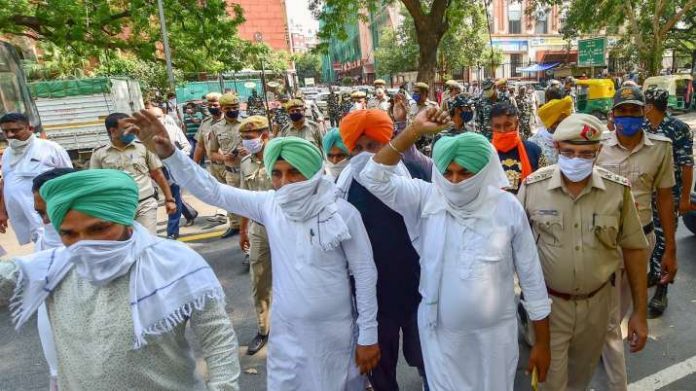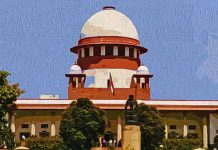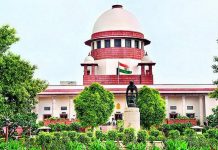This article is written by Ayushi Sharma and the article has been edited by Khushi Sharma (Trainee Associate, Blog iPleaders).
Table of Contents
Introduction
The protests of the agrarian primary sector aptly termed “the Farmers Protests” is one of the most consequential political events on the Indian subcontinent to have occurred in the last decade. It involved the enactment of mainly 3 reorganization bills which when enacted would change the way farmers would interact with the markets. It mainly rolled back many of the protections given to agrarian producers by previous governments to allow for corporate entities to deal openly with producers, rather than having to procure the required products through the middle state and district level intermediary markets, also known as ‘mandis.’
While this movement served as a unifying force for individuals across the nation to move against the apparent privatization fever that had grasped a hold of the Modi economic regime, it wasn’t long before cracks begin to become more apparent. Naturally, protest movements tend to break apart over time owing to a change in circumstance and practical logistics. One common reason for fragmentation is often differences of opinion in respect to the manner in which such protests take place. In this manuscript, we shall examine the road blockades concerning the Farmers protests and assess the developments of the protest fragmentation, party interests and related occurrences.
The farmers’ protests have been a contentious issue in Indian politics for some time. From major marches with tractors and hundreds of participants, calling the farmers protests well organized would be an understatement. They however were particularly successful in drawing the ire of the central government when they marched into Delhi, the capital of the Republic of India, and managed to hold massive road blocking dharnas
For instance, during the early days of February 2021, major flyovers leading to the Indian capital were swarmed with the representative of the farmers’ unions as well as their supporters. The Delhi to Agra Flyover saw a dharna at Palwal with over 2000 farmers and other supporters. Similar blockades were set up on the Delhi to Jaipur as well as the Delhi to Ambala highways. Multiple other locations across the states of Haryana and Punjab also created a noticeable impact.
In the city of Delhi, while no unions operated outright based on such plans during this time. High levels of violence were witnessed near the office of the Income Tax Department on the 25th of January leading to the end of Republic Day. This resulted in leaders from over 3 agricultural and traders unions being taken into preventive custody and at least 60 protesters being detained. This incident forced the centre to act decisively, with over fifty thousand police and law enforcement personal being deployed to monitor the capital with social media being searched extensively for potential stages of violent protests. While the protesters managed to attract a lot of attention, they also attracted a lot of negative publicity owing to the violent tinge the protest subsequently acquired.
This resulted in extensive fragmentation of the movement, while the protests and road blockades in Delhi persisted.
Court Intervention
B.1 Institution of Proceedings
The 4th of October 2021 saw one of the earliest formal interactions of the courts of India with the farmers’ protests, irrespective of how disorganized it was. This occurred when the apex Court, the Supreme Court of India began issuing notices to the over 40 organizations which constituted the most significant actors of the farmers’ protests.
These notices were issued by way of a petition filed by a resident of Noida, a city of the National Capital Region against the blockade on the Delhi to National Capital Region Highway. This proceeding was eventually joined by the 40 plus organizations mentioned above and even by the government of Haryana, who joined the matter to implead the leaders of the above-impugned organizations as Respondents to the application before the Supreme Court. The Courts enlisted many leaders of the protests including, but not limited to:
- Rakesh Tikait– The national spokesperson for the Bharatiya Kisan Union, also known as the BKU.
- Yogendra Yadav– A founding member of organizations such as the Swaraj Abhiyan, also known as the SA and the Jai Kisan Andolan, also known as the JKA
- Darshan Pal– Leader of the Krantikari Kisan Union, also known as the KKU.
- Gurnam Singh– The leader of the Bharatiya Kisan Union’s Harayana Operations. He was also the founder of Operation Punjab, the main operation behind the road blockade in Delhi.
The original applicant, Ms Monicca Agarwaal filed for this application owing to the immense personal cost this demonstration had caused her, as travels to and from her place of work went from a brisk 20-minute drive to a 3-hour ordeal.
B.2 Progression of the matter
This matter was heard before Justice Sanjay Kishan Kaul as well as Justice MM Sundresh of the Supreme Court of India and is scheduled to be heard on the 20th of October 2021.
Notices were issued on the request of the Honorable Solicitor General of India, Shri Tushar Mehta, who requested the issuance of the same to eliminate any reasons for the representatives of the above-impugned organizations to not appear not to engage with the government. While the Court has yet to proceeding past the procedural formalities of the issue, the matter has had substantial changes and developments.
For instance, the government has made abundantly clear, its desire to work with the representations of the union to work out a mutually acceptable arrangement. In this regard, Shri Tushar Mehta has been tasked with the negotiations, so that he may interact with the leaders of the protestors under the context of the legal proceedings so as to bring a halt to the matter. In respect to this objective, he made it clear to the Court that the state has constituted a committee to organize talks between the conflicted parties. Such a committee’s invitations however were ignored by the impugned organizations.
B.3 Current Status
While the substantives of the existing proceedings have yet to be discussed, the Supreme Court has indicated its displeasure with the institution of these road blockades. For instance, Justice Kaul stated that:
“Redressal can be through judicial forum agitation or parliamentary debates but how can highways be blocked and this cannot be a perpetual problem”
At the same of the numerous organizations have been sent notice, many have issued counter statements indicating their desire not to be placed in the same category as other operators. For instance, the Kisan Maha Panchayat indicated to the Supreme Court of India that it was “neither the part of protestors, who have been stopped and restrained by the Police/ Security Personnel at any National Highway nor is the members of the Petitioner farmers body involved in any activity causing any permanent/temporary blockage on the movement on any road.”
This occurred after the Kisan Maha Panchayat requested the Court for permission to hold Satya Graha near the Jantar Mantar. Such a request, before the organization, making the above distinction would have likely been denied owing to their apparent association with the road blockades. This opinion is further substantiated by the following quote by Justice AM Khanwilkar:
“You have strangulated the entire city, now you want to come inside?”
Conclusion
It is left to be seen what will happen before the court when this matter truly starts progressing into its substantive issues. If one thing however has become clear, it is that while the protesters are working towards a common objective, they are not a monolith by any means of the imagination.
Multiple different protesting groups have operated quite distinctly ever since the protests escalated to violence on Republic Day 2021. This could substantially impact the manner in which the government goes about dealing with the manner. In one way one could argue that such fragmentation would be a demerit to the farmers as they shall no longer have the same numerical advantage, they once enjoyed in carrying out their demonstrations. However, at the very same time, such fragmentations hall also prevents the protests from being suppressed owing to potential violent protest as each demonstration shall operate independently of each other.
Therefore, this event could prove to be a decisive point for the farmers’ protests in terms of the movement attaining its original objective of the removal of the 3 Farm Reorganization Acts.
LawSikho has created a telegram group for exchanging legal knowledge, referrals, and various opportunities. You can click on this link and join:
https://t.me/joinchat/J_0YrBa4IBSHdpuTfQO_sA
Follow us on Instagram and subscribe to our YouTube channel for more amazing legal content.
 Serato DJ Crack 2025Serato DJ PRO Crack
Serato DJ Crack 2025Serato DJ PRO Crack











 Allow notifications
Allow notifications



